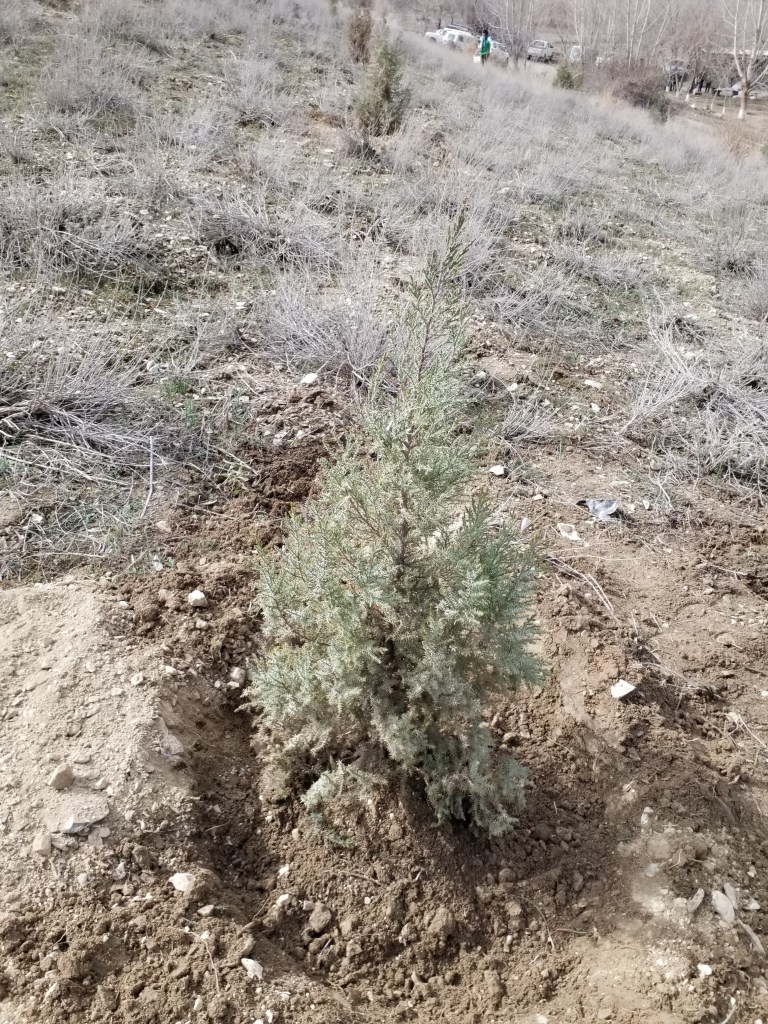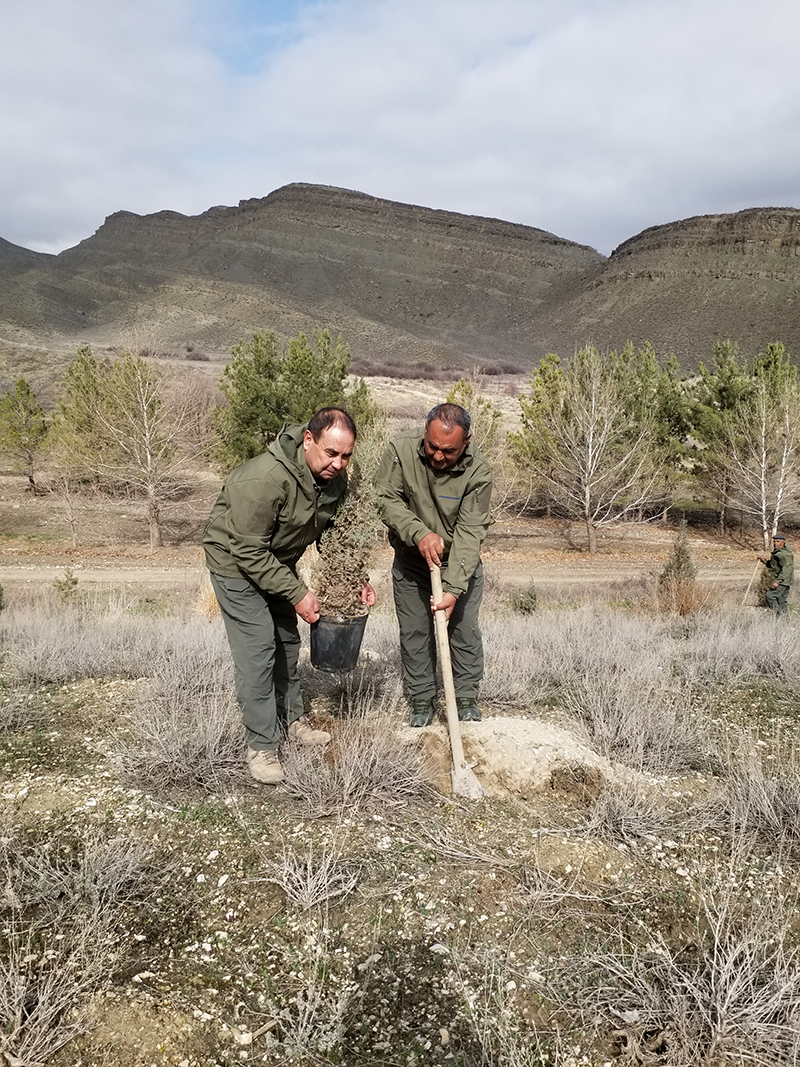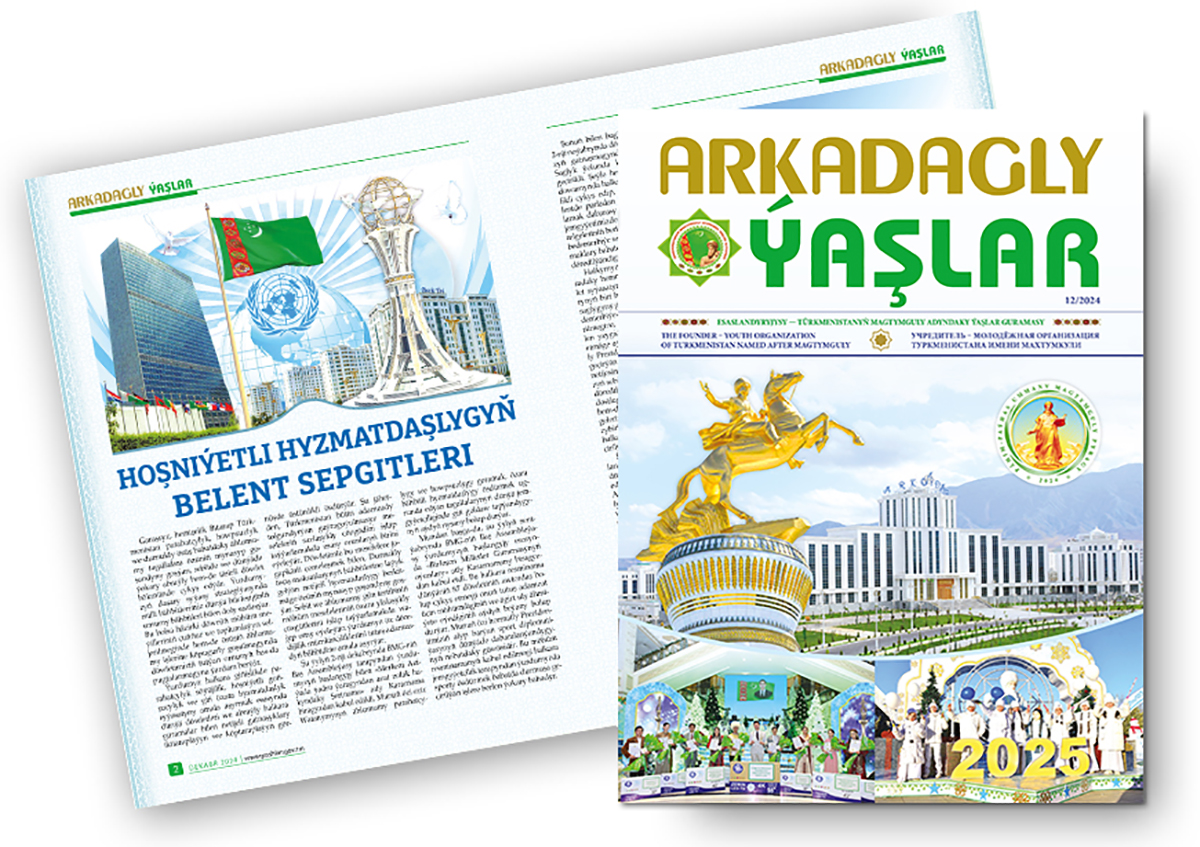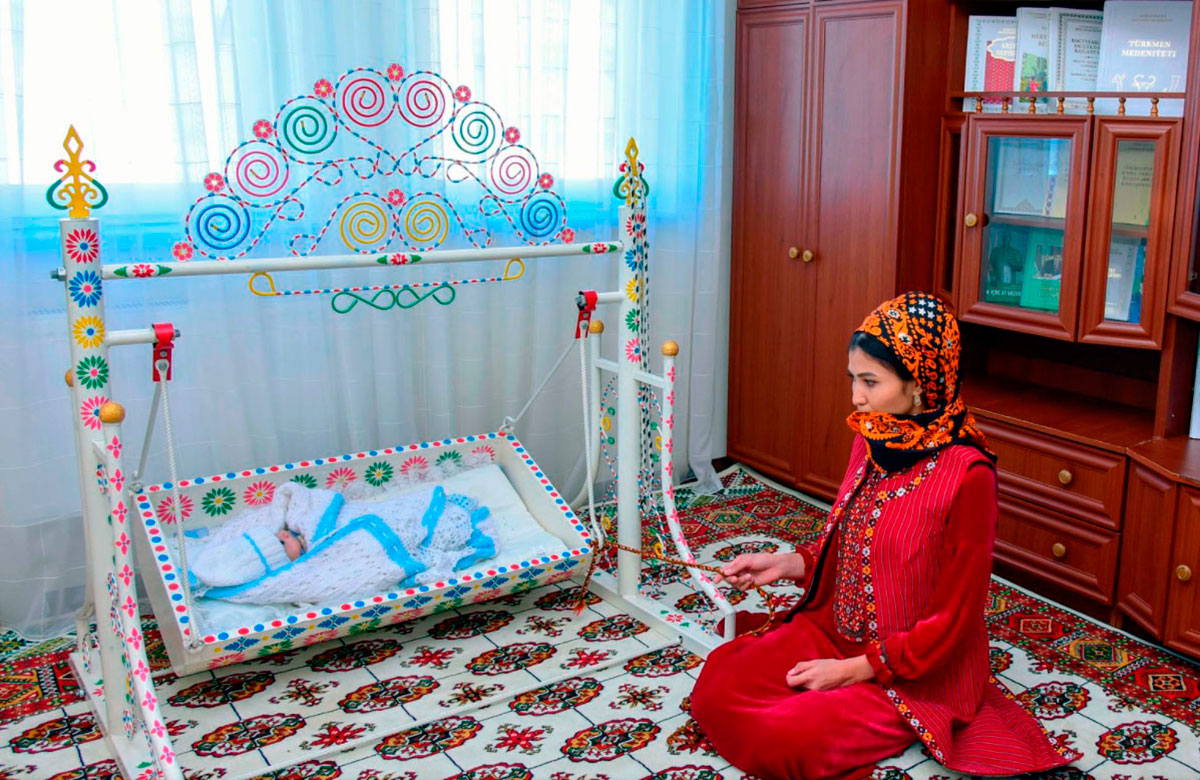With the beginning of the spring greening season this year, when gardening and afforestation work is carried out throughout the country in cultural and natural areas, the work has been intensified in plant nurseries and experimental plots in nature reserves. Here, ecologists propagate "red listed" species, rare, medicinal and original flora.

These activities correspond to the provisions of Turkmenistan's National Forest Program, which include scientific plantings that contribute to the strengthening of vegetation around estates and cordons of plots, outside the boundaries of strictly protected natural territories. Within the reserves, nature is preserved in its pristine state according to the rules of natural science.
Recently, a mass planting campaign of wild plants took place in the Kopetdag State Nature Reserve under the Ministry of Environmental Protection of Turkmenistan, with the participation of the Agrarian Party of the country and the Environmental Protection Department of Ahal velayat. The work was carried out both within the reserve and along the Bakhcha River, where the riverbank was cleared of plastic and other debris. Dozens of young deciduous and fruit-bearing trees were planted here. The elder of the reserve D. Seyitmukhammedov emphasized that the practice of strengthening the banks of canals and rivers is a proven long-term measure for preserving the landscape, and the trees in the lowlands, where the mountain river flows, will merge with the local vegetation in the future. Wild species are used for their better adaptation to local soil and climatic conditions in order to strengthen the soil and vegetation cover of the riverside areas and create favorable conditions for the preservation and replenishment of water and the habitat of small animals that seek shelter in the shade of local thickets during the summer. The soil has been hydrated after recent rains, and we hope that all our seedlings will take root and become part of the local ecosystem. They have been grown on the territory of the reserve's farmstead, and now we transfer them to their natural environment, while new seedlings will take their place in the nursery beds. This work continues uninterruptedly.

Ecologists and nature lovers planted pistachio trees at the experimental plot "Bacha" from seeds of local forms of the tree species. A significant wedge of 150 seedlings was planted. Up to twenty almond saplings found a permanent place here, as well as the same number of Turkmen junipers, or archa. The prickly juniper, archa, has been carrying needles instead of leaves for about ten years, and it has replenished existing plantings, totaling about a hundred trees. The young plantings occupy one side of a gently sloping low hill. Both young workers and elderly people worked on the plantings, and everyone wanted to plant their own archa or lend a hand in unloading, carrying it to the hill, choosing a spot, surrounding the hole, and watering it. It can be said that as a result of collective work, each participant planted his own juniper, and in general - several saplings that were given to nature. Archa is a valuable species; it may grow by 3-5 centimeters a year but can live for 600-800 years. The planned spring plantings will continue until the end of March and will resume in the fall. The volumes of these plantings are determined in the schedule of activities of the Ministry of Environmental Protection.
As noted by B. Atayev, director of the reserve, the campaign attracted fifty participants, all of whom tried to be useful. No one was left aside, and people came from far away to tidy up the river, do something useful and necessary for nature. Everyone was satisfied with their contribution to the overall reforestation of natural areas, implementing the President's Decree, which regulates the long-term movement to transform the native Turkmen land into a blooming garden. New plantings are also being formed in the Germab, Myane-chyache, Novrek-chesme, Gurykhovdan, and Gyaur areas of the reserve, and the planting material was grown by the ecologists themselves.
Environment protection inspector A. Mergenov, who has devoted thirty years to the profession and nature conservation, explained that in order to preserve natural wealth, inspections are carried out not only in the reserve territory but also in places of mass recreation for the population, grazing areas for sheep, where educational conversations are held and advice is given on how to arrange safe recreation for nature, explaining the rules of fire and environmental safety. Special attention is paid to the youth and the education of eco-behavior in nature among the younger generation. For this purpose, the action plan includes visits to schools and children's health centers. In the near future, an inspection of the areas adjacent to the children's health centers will begin to catch dangerous reptiles, which usually wake up in April-May. In this regard, lectures for children will be held during all summer vacations to teach them how to behave when encountering snakes and how to distinguish venomous ones (we have four species - cobra, gyurza, shield-nosed, and echis, their appearance and behavior are quite recognizable) from harmless cold-blooded ones. We also try to conduct such campaigns in gardening and livestock farms, reminding people about safety measures, urging them to be cautious, wear safe clothing, footwear, etc. We also remind that among venomous snakes there are "red listed" species and talk about their importance for biodiversity.
A few women participants of the plantings emphasized that the plantings were timed to the National holiday of Novruz, celebrated by all Eastern nations. During these days, the earth wakes up for a new life, becomes beautiful, and we also decorate it with our work. It is not in vain that the international calendar of significant environmental dates during this period includes Earth Day, International Day of Forests, and World Water Day.









